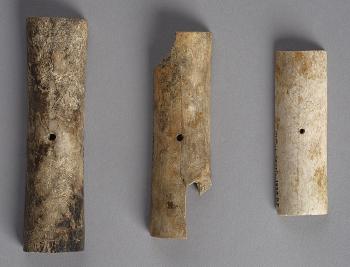American Journal of Archaeology | The Journal of the Archaeological Institute of America
You are here
Bone Objects as Offerings of Animal Bodies in Archaic Greek Sanctuaries
July 2023 (127.3)
Bone Objects as Offerings of Animal Bodies in Archaic Greek Sanctuaries
During the late eighth and the seventh centuries BCE, objects worked from animal materials became a common form of offering at sanctuaries across the Greek world. Contemporary dedication practices of modified bone shafts at the sanctuary of Artemis Orthia at Sparta and at two sanctuaries on Rhodes (Athena Kameiras and Athena Lindia) indicate that during this period there was an emphasis on creating and offering conspicuously organic objects made from the remains of animals. This article argues that perceptions of corporeality in the early Greek world permitted an understanding of the human body as a collection of separate parts. Examining the dedication of the modified bone shafts along with other ritualized acts (e.g., sacrifice and meat consumption) reveals that animal bodies could also be divided into distinct parts with separate functions. By repeatedly disassembling and transforming animal bodies, individuals in the Greek world offered bone objects that functioned as extensions of once-living animals, structuring and maintaining the relationships among humans, animals, and the divine.
Bone Objects as Offerings of Animal Bodies in Archaic Greek Sanctuaries
By Adam DiBattista
American Journal of Archaeology Vol. 127, No. 3 (July 2023), pp. 339–364
DOI: 10.1086/724512
© 2023 Archaeological Institute of America


